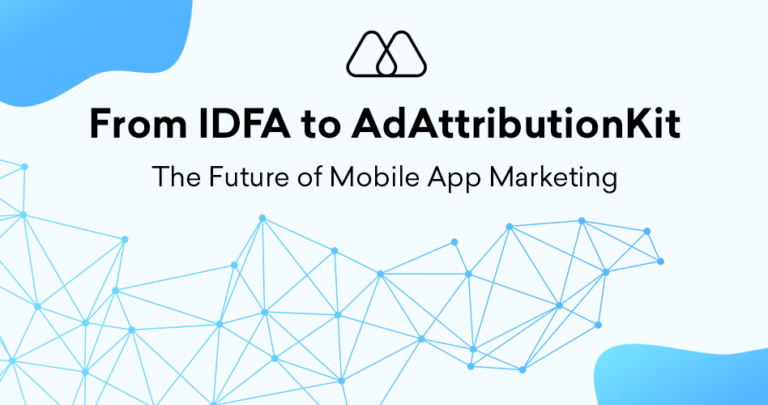In the fiercely competitive world of mobile app marketing, converting users into paying customers requires a targeted approach. Dynamic product ads (DPAs) emerge as a powerful tool for e-commerce marketers, leveraging user data and automation to deliver highly personalized product recommendations within mobile apps. This article explores the concept of DPAs, delving into their functionalities, benefits, campaign optimization strategies, and best practices for maximizing the impact of your mobile app advertising efforts.
What are Dynamic Product Ads (DPAs)?
Dynamic product ads (DPAs) are a form of automated advertising utilized by e-commerce marketers within mobile apps. DPAs leverage product data feeds from your online store and user behavior data collected within the app to dynamically generate personalized ad creatives showcasing relevant products to each user.
Here’s a breakdown of the concept:
- Automated Personalization: DPAs utilize algorithms to personalize ad creatives based on user data. This data can include browsing history, abandoned carts, past purchases, and user demographics.
- Real-Time Relevance: DPAs update product recommendations in real time, ensuring users see ads featuring products relevant to their current interests and behavior within the app.
- Seamless User Experience: DPAs integrate seamlessly within the mobile app environment, delivering a non-disruptive yet highly targeted advertising experience.
Why Use Dynamic Product Ads (DPAs) for Mobile App Advertising?
For e-commerce marketers aiming to boost conversions and sales through their mobile apps, dynamic product ads (DPAs) offer a compelling value proposition:
- Increased Relevancy: By showcasing products relevant to individual user preferences, DPAs significantly increase the likelihood of capturing user attention and driving clicks.
- Improved Conversion Rates: Highly personalized product recommendations resonate better with users, leading to potentially higher conversion rates and a more efficient marketing spend.
- Retargeting Capabilities: DPAs can retarget users who have previously interacted with specific products within your app, reminding them of their interest and potentially prompting a purchase.
- Dynamic Creative Optimization: Many DPA platforms offer dynamic creative optimization (DCO) features that automatically test different ad variations and product combinations, allowing you to identify the most effective creatives for each user segment.
5 Key Takeaways for Mastering Mobile App Advertising with DPAs
- Prioritize High-Quality Product Data Feeds: Ensure your product data feeds are accurate and complete, and include high-quality images and detailed product descriptions. This forms the foundation of effective DPA personalization.
- Segment Your Audience: Leverage user data to segment your mobile app audience based on various criteria like demographics, purchase history, and in-app behavior. This enables you to tailor DPA creatives to resonate with each user segment.
- Utilize Dynamic Creative Optimization (DCO): Take advantage of DCO features offered by your DPA platform to continuously test and optimize ad creatives, ensuring you deliver the most compelling product recommendations to each user.
- Track and Analyze Performance Metrics: Closely monitor key performance indicators (KPIs) like click-through rates (CTRs), conversion rates, and return on ad spend (ROAS) for your DPA campaigns. Analyze data to identify areas for improvement and refine your targeting and creative strategies.
- Test Different Bidding Strategies: Experiment with different bidding strategies for your DPA campaigns, such as cost-per-click (CPC) or cost-per-acquisition (CPA), to optimize ad spend and maximize campaign ROI.
Beyond the Basics: Advanced DPA Techniques for E-Commerce Marketers
For sophisticated e-commerce marketers seeking to push the boundaries of dynamic product ads (DPAs) effectiveness, explore these advanced techniques:
- Lookalike Audiences: Leverage lookalike audience features offered by some DPA platforms. This allows you to reach new users with similar characteristics as your existing high-value customers, potentially expanding your reach to a highly targeted audience segment.
- Retargeting with Abandoned Carts: Utilize DPAs to target users who have abandoned carts within your app. Showcase the abandoned products within your ad creatives to remind users of their intent and potentially nudge them toward completion.
- Promotional Offers and Dynamic Pricing: Integrate dynamic pricing and promotional offer data into your DPAs to showcase discounted products or highlight limited-time deals, potentially increasing the urgency to click and purchase.
- Omnichannel Marketing Integration: Align your DPA strategy with your broader omnichannel marketing efforts. Leverage user data across different channels to deliver a unified and personalized shopping experience.
Dynamic Product Ads: A Personalized Engine for Mobile App Sales
By harnessing the power of dynamic product ads (DPAs), e-commerce marketers can unlock a powerful tool for driving sales and conversions within their mobile apps. DPAs leverage automation and user data to deliver highly personalized product recommendations, significantly enhancing the relevance and effectiveness of your mobile app advertising efforts.
Leveraging Machine Learning for Enhanced Personalization
Many advanced DPA platforms incorporate machine learning algorithms that advance beyond basic user data analysis. Here’s how this can elevate your DPA strategy:
- Predictive Recommendations: Machine learning can analyze user behavior patterns and predict future interests. DPAs can leverage these predictions to showcase products users might be interested in even before they search for them, creating a more engaging user experience.
- Dynamic Content Personalization: Beyond product recommendations, machine learning can personalize other elements of your DPAs, such as ad copy, visuals, and CTAs. This allows for a tailored ad experience that resonates deeply with each user.
Building a Customer-Centric DPA Strategy
To maximize the effectiveness of your DPA campaigns, prioritize a customer-centric approach:
- Focus on User Privacy: Ensure your DPA strategy complies with privacy regulations and prioritizes data security. Transparency in data collection practices fosters trust and enhances the user experience.
- Deliver Value with Each Ad: DPAs should not simply promote products; they should offer value to users. Consider incorporating educational content, or product tips with product recommendations, to enhance user engagement.
- Measure Long-Term Customer Lifetime Value (CLTV): Expand on focusing solely on immediate conversions. Track user behavior post-click to understand the long-term impact of your DPAs on customer lifetime value.
The landscape of mobile app advertising is constantly evolving, and DPAs are poised to play an increasingly significant role. By embracing advanced personalization techniques, prioritizing user privacy, and adopting a customer-centric approach, e-commerce marketers can leverage DPAs to unlock a powerful engine for driving sales and building lasting customer relationships within their mobile apps.




